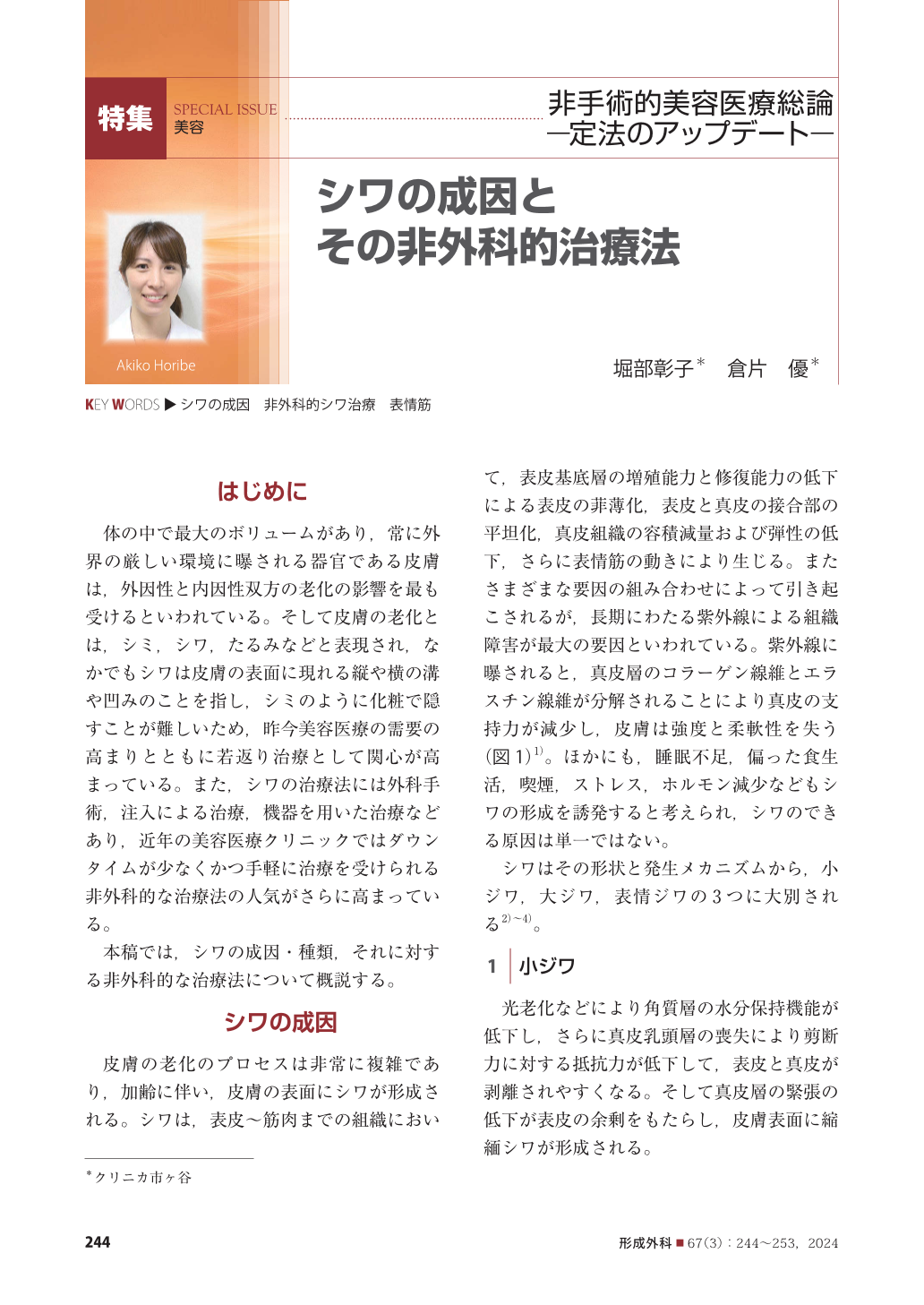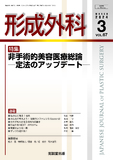Japanese
English
- 有料閲覧
- Abstract 文献概要
- 1ページ目 Look Inside
- 参考文献 Reference
はじめに
体の中で最大のボリュームがあり,常に外界の厳しい環境に曝される器官である皮膚は,外因性と内因性双方の老化の影響を最も受けるといわれている。そして皮膚の老化とは,シミ,シワ,たるみなどと表現され,なかでもシワは皮膚の表面に現れる縦や横の溝や凹みのことを指し,シミのように化粧で隠すことが難しいため,昨今美容医療の需要の高まりとともに若返り治療として関心が高まっている。また,シワの治療法には外科手術,注入による治療,機器を用いた治療などあり,近年の美容医療クリニックではダウンタイムが少なくかつ手軽に治療を受けられる非外科的な治療法の人気がさらに高まっている。
本稿では,シワの成因・種類,それに対する非外科的な治療法について概説する。
Tissue damage from prolonged ultraviolet (UV) exposure is one of the most important factors in the development of wrinkles. Exposure to UV light deteriorates collagen and elastin fibers in the dermal layer, reducing dermal support and resulting in losses of skin strength and flexibility. Facial wrinkles are classified into surface wrinkles, wrinkles due to sagging, and wrinkles caused by contraction of the facial muscles. Nonsurgical treatments for age-related expression wrinkles include filler injections, botulinum toxoid injections, and mechanical heat therapy. Filler treatments are increasingly common; these treatments use small, deep injections of filler preparations to replenish bone volume that has been absorbed with age, to reinforce lax support ligaments, and to lift. Microinjection techniques are sometimes used in botulinum toxoid treatment to inject smaller amounts of botulinum toxin product into the dermis over a wider area, depending on the site. There are various types of thermal rejuvenation equipment that apply heat to the layers from the dermis to the superficial muscular aponeurotic system (SMAS), including lasers, radiofrequency devices, and ultrasound devices. Combined treatments must be performed with a thorough understanding of the characteristics of each treatment modality.

Copyright© 2024 KOKUSEIDO CO., LTD. All Rights Reserved.


